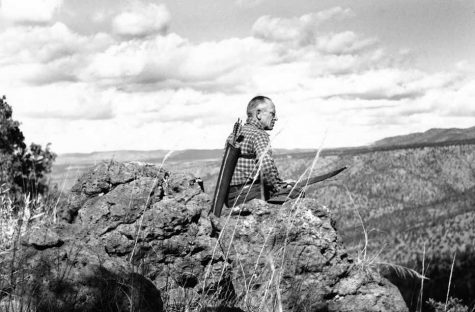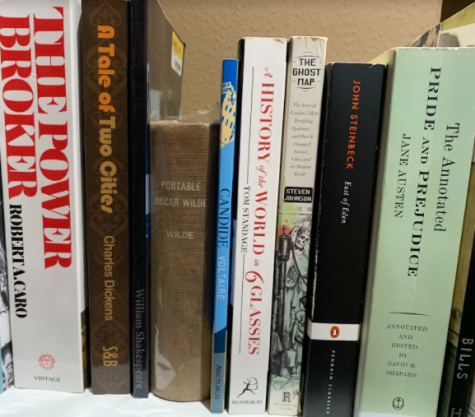A Sand County Almanac: A Perennial Guide to the World We’re Losing
A Sand County Alamanac is an elegy to an idyllic Wisconsin landscape struggling against the encroachment of the modern era.
What makes a book great? What must it have to be deemed a ‘favorite’? These questions of subjectivity are questions we as readers subconsciously ask ourselves as we work our way through a piece of literature. In my opinion, our individual answers boil down to essentially one thing- enjoyment. Yes, there are beautifully written, objectively ‘great’ works of literature, but unless you as a reader felt and received joy as you read, it likely won’t number your list of favorite books.
So, it takes a special book to be considered both ‘great’ and a favorite– it takes an even rarer one for me to decide, before having even reached the last chapter, that the work was both. A Sand County Almanac is that rarity. Through eloquent prose, disarmingly beautiful metaphor and universal truths, Aldo Leopold paints a breathtaking portrait of his Wisconsin homestead, yes, but also the changing world around him. The main body of the Almanac details Sand County in 12 chapters, each describing the changes and peculiarities of the land throughout each month and season. Leopold leads us through the epic April thaw, exuberant Summer bloom, and thoughtful silence of an October grouse hunt. By detailing the little intricacies, those small, sacred moments of the forest, he recounts a larger saga of the acreage to which all life seems to be tethered. It is Leopold’s tender descriptions of the small joys of life and land which endear us so to the triumph of Sand County. “Along the little boggy streams of these friendly wastes, called poor by those whose own lights barely flicker, the blackberries burn richly red on every sunny day from first frost to the last day of the season. Every woodcock and every partridge has his private solarium under these briars.”
“All conservation of wildness is self-defeating, for to cherish we must see and fondle, and when enough have seen and fondled, there is no wilderness left to cherish.”
— Aldo Leopold
Another thing that makes A Sand County Almanac so enduring is how, while it is a love letter to the wilderness, it is also woeful, an elegy of sorts. Though the Almanac was written some seventy years ago, man’s overbearing footprint on land and nature had already developed an omnipresence that Leopold was attuned to. He sees it in the prairie that has been lost, in Wisconsin’s last marten, laid to rest in 1927, and even in the bright silphium flower, who’s yellow majesty was all but extinguished from the Wisconsin prairie in his time. “What a thousand acres of silphiums looked like when they tickled the bellies of buffalo is a question never again to be answered, and perhaps not even asked”
And while Sand County is at times a lamentation of realism, a sorrowful reflection on the destruction and loss inflicted by humankind on nature, it is also an appreciation of what we have not lost– and what we must fight to maintain. Leopold is a realist, but never a fatalist. He is an idealist too, and though these two truths may seem contradictory, so is man’s relationship with nature. So is, as Leopold himself implies, the idea that we can control and conquer the unconquerable, commodify the only thing we all share and own– our public lands and wildlife.
So, once more, I examine the question: What makes a book a favorite? I believe it is those that bring joy, and also those that stick with you. The works that change your worldview for the better, the books that even days, weeks, months, and eventually years after finishing, you carry and hold close. And so, once more, I share my answer that Aldo Leopold’s Sand County Almanac is one of these sacred books. From the unmitigated beauty of the natural world to the philosophical questions of man’s ardent dissociation from it, A Sand County Almanac is a perennial guide to both– and more. It is a small introduction to ecology, the conservationist’s dreamy respite from the conservationist’s living nightmare of our reality.

Note: While Leopold’s vibrant imagery is more than sufficient, if you appreciate visuals, consider reading Michael Sewell’s version of the book, accompanied by his own photographs of Sand County.
Your donation will support the student journalists of Carnegie Vanguard High School. Your contribution will allow us to cover our annual website hosting costs and fund field trips, competition fees, and equipment. We appreciate your support!

Howdy! My name is Sofia Hegstrom and I am a senior who loves to read.

















Diego A Gonzalez • Apr 29, 2021 at 11:16 pm
I’ve been reading a lot recently and this review made me want to pick it up and read it myself. Very good writing as well.
Thomas Dowe • Apr 29, 2021 at 11:16 pm
This is a very in-depth review of the book that makes me want to read it at some juncture.